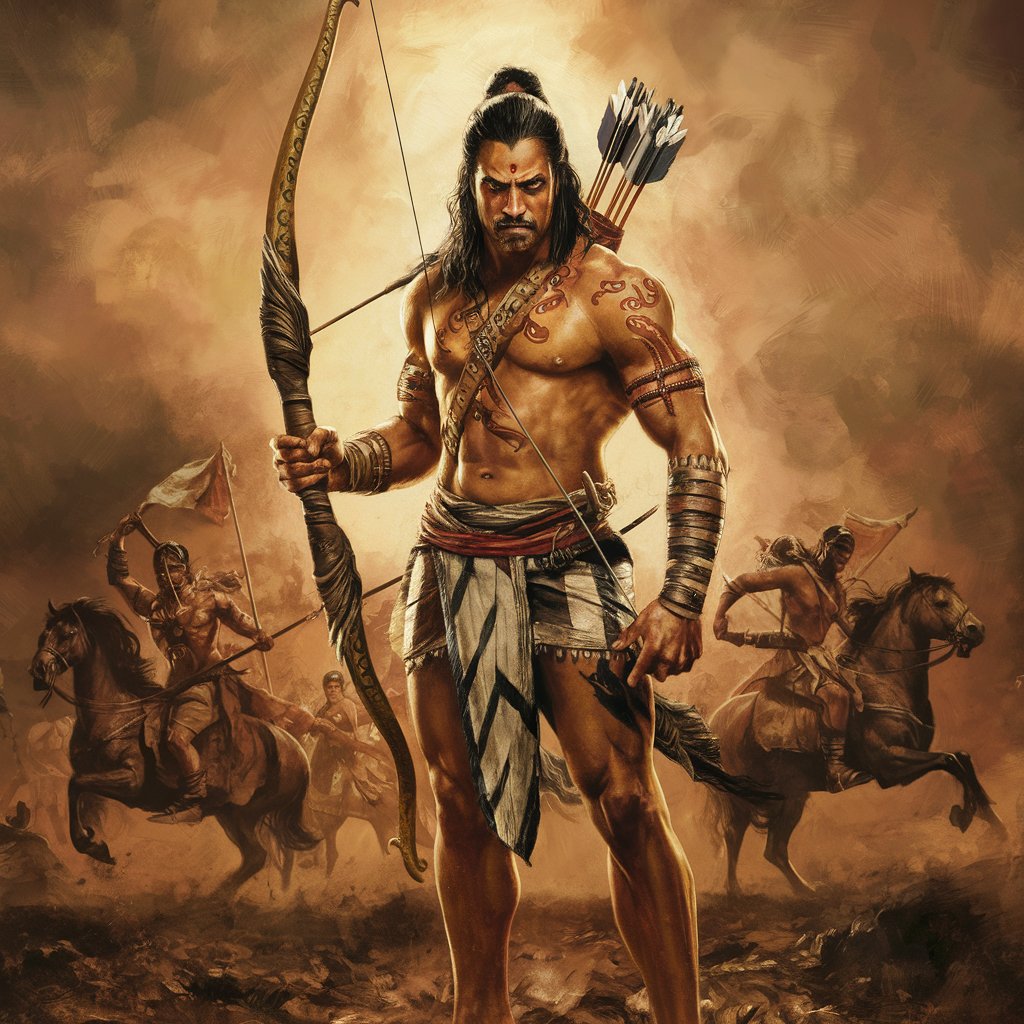The story of Barbarik, also known as "Khatu shyamji", is not directly from the Mahabharata but originates from Hindu folklore and later adaptations. Barbarik is a character associated with the Kuru lineage, and his story is often told in the context of the Mahabharata.
According to folklore, Barbarik was the son of Ghatotkacha (the son of Bhima) and Maurvi, who was the daughter of the King of Manipur. Barbarik possessed exceptional skills in archery from a young age due to his divine lineage. Legend has it that he possessed three divine arrows given to him by the gods Brahma, Vishnu, and Shiva. These arrows had the power to ensure victory in any battle.
Before the great Kurukshetra War of the Mahabharata, Barbarik expressed his desire to witness the battle. He approached his mother, Maurvi, seeking her blessings to participate. She granted his wish but advised him to fight for the side that was weaker, as his participation would tilt the balance of power significantly.
Barbarik then took the form of a boy named Shyam and arrived at the battlefield equipped with his divine arrows. Upon witnessing his extraordinary abilities, Lord Krishna approached him and tested his devotion. Krishna placed a challenge before him: he asked Barbarik to tie all the leaves of the peepal tree under which he was standing using his arrows. Barbarik accepted the challenge but as soon as he started, the leaves began falling to the ground. This made Barbarik realize the omnipresence of Lord Krishna, who was present in every leaf.
Impressed by his devotion and skills, Krishna asked Barbarik which side he would support in the war. Barbarik, bound by his promise to fight for the weaker side, decided to support the Pandavas. Lord Krishna then revealed that if Barbarik participated in the war, his divine arrows would annihilate all the warriors, making it impossible for the war to last more than a few minutes. Barbarik's arrows had the power to identify and target the weakest points of any warrior, ensuring their defeat.
Understanding the consequences, Barbarik agreed to Krishna's proposal and handed over his head to Krishna as a promise. Krishna placed his head on a hill overlooking the battlefield, from where Barbarik could witness the entire war. It is believed that after the war, Barbarik's head was immersed in the Arabian Sea near the coast of Gujarat, where a temple dedicated to him, known as the Khatushyamji temple, stands today.
Though Barbarik's story is not directly narrated in the Mahabharata, it is often retold in various adaptations and folklore, highlighting themes of devotion, sacrifice, and the consequences of power.

In some versions of the folklore surrounding Barbarik, it's believed that his participation in the war would have led to the swift conclusion of the battle, as his arrows had the power to kill or incapacitate any warrior they struck. However, Krishna's intervention prevented this from happening, as it would have violated the dharma (righteous duty) of the warriors on both sides to engage in a fair and just battle.
The story of Barbarik serves as a reminder of the complexities of dharma and the importance of considering the greater good in decision-making. It also underscores the role of devotion and surrender to the divine will, as Barbarik willingly submitted to Krishna's plan despite the personal sacrifice it entailed.
Over time, Barbarik came to be worshipped as a deity in some regions, particularly in Rajasthan, where the Khatushyamji temple is a popular pilgrimage site. Devotees believe that Barbarik's blessings can grant success, protection, and fulfillment of wishes. The temple attracts thousands of devotees, especially during the annual Barbarika Mela, where rituals and celebrations honor his legend.
Barbarik's story continues to resonate with people, serving as a source of inspiration and spiritual guidance in navigating life's challenges with faith, devotion, and humility.
The story of Barbarik : Khatushyam